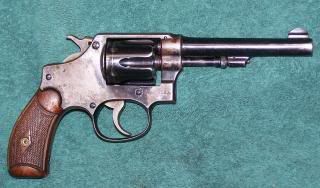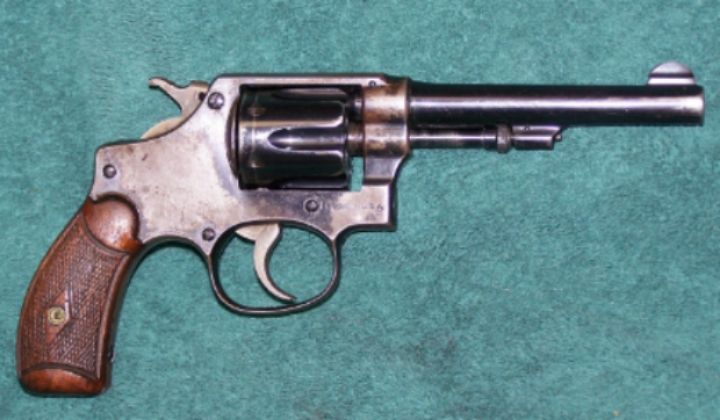I have had my eye out for a .32 S&W Long. The Model 31 I had in the eighties was sold to help finance grad school and I have regretted it ever since. I found a .32 Hand Ejector yesterday at my local gun store. It was not in the pristine condition that my 31 had been in, but has been fired very little, as indicated by the wear on the parts, but the blue is 50% or less and the gun is a lot older than my Model 21 was.
This new acquisition has four screws in the side-plate and a screw in front of the trigger guard. The serial is: 3848xx.
The gun store clerk called it a "3rd Model, Hand Ejector". can anyone give me some info on that?
I have ordered a mold, brass, Dillon 550b conversion kit and cannot wait to get it shooting.
One thing that puzzles me, is that instead of a coil hammer spring (as my Model 31 had), it has a flat, albeit shorter than K,L,N, mainspring. Inasmuch as the weight of the trigger pull (unlike my Model 31 was), is very heavy, without having to go to Wolff's site, are there going to be hammer springs available, preferable lighter for it? Even a standard one would be acceptable, inasmuch as I could work on a replacement instead of messing with the original.

The trigger return spring looks to be standard and I have a half-dozen or so with varying weights so that is not a problem.
Bigger is better:

This new acquisition has four screws in the side-plate and a screw in front of the trigger guard. The serial is: 3848xx.
The gun store clerk called it a "3rd Model, Hand Ejector". can anyone give me some info on that?
I have ordered a mold, brass, Dillon 550b conversion kit and cannot wait to get it shooting.
One thing that puzzles me, is that instead of a coil hammer spring (as my Model 31 had), it has a flat, albeit shorter than K,L,N, mainspring. Inasmuch as the weight of the trigger pull (unlike my Model 31 was), is very heavy, without having to go to Wolff's site, are there going to be hammer springs available, preferable lighter for it? Even a standard one would be acceptable, inasmuch as I could work on a replacement instead of messing with the original.

The trigger return spring looks to be standard and I have a half-dozen or so with varying weights so that is not a problem.
Bigger is better:

Last edited:
